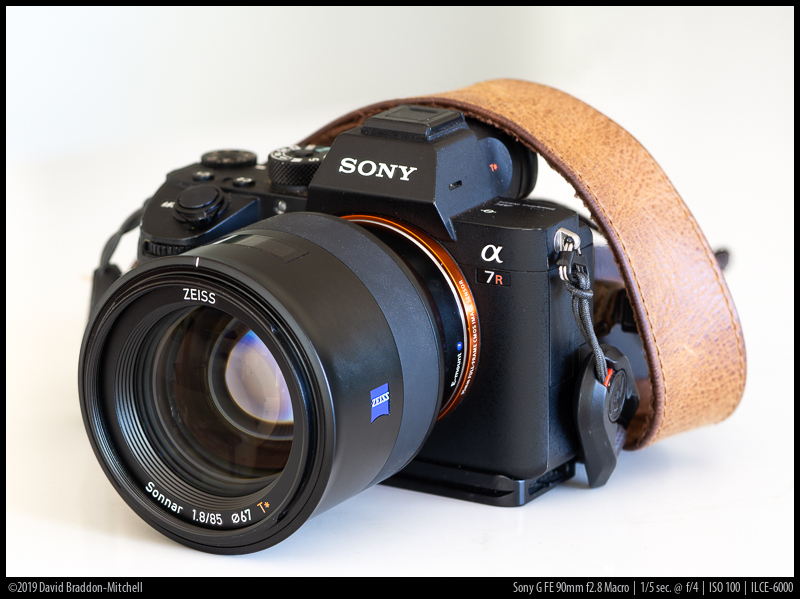
The Zeiss Batis 1.8/85mm lens has generated less excitement than any other Batis. Perhaps because it falls between the stools of two competitors: the excellent and cheaper Sony 1.8/85, and the Sony G Master 1.4/85. People think if you don’t want the GM lens, with it’s beautiful bokeh and low mechanical vignetting, you should maximise your savings get the Sony.
Often in the introduction to reviews we write teasers – Is this true? Read on to find out!! No teaser here. It’s not true. By all means get the Sony if you aren’t up for the added cost of the Batis. But the Batis is a great lens, worth the price if you can easily afford it and are looking for an all-rounder. Now for the teaser: read on to find out why.
Samples
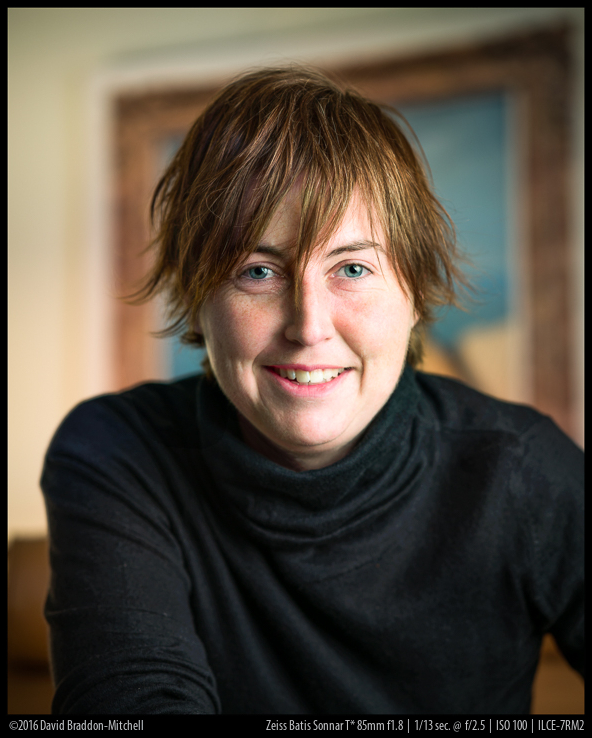
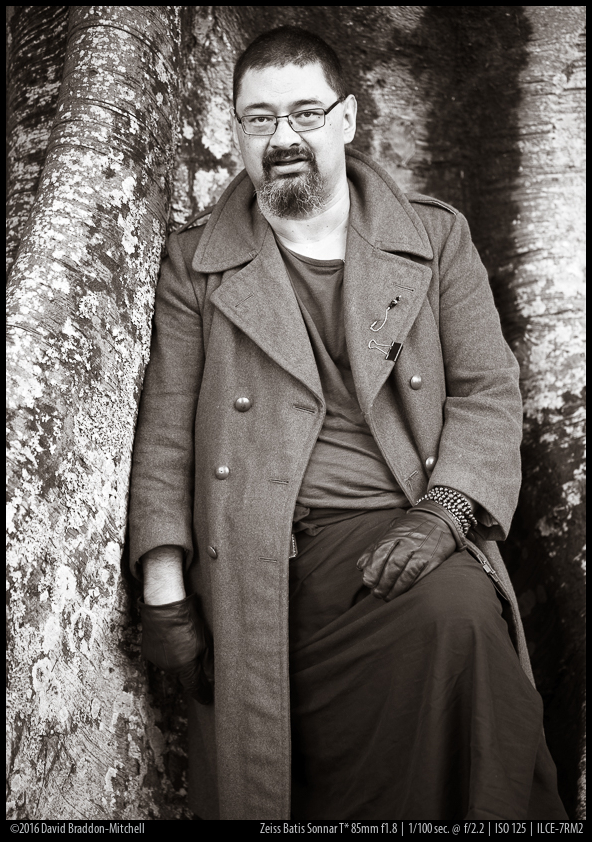
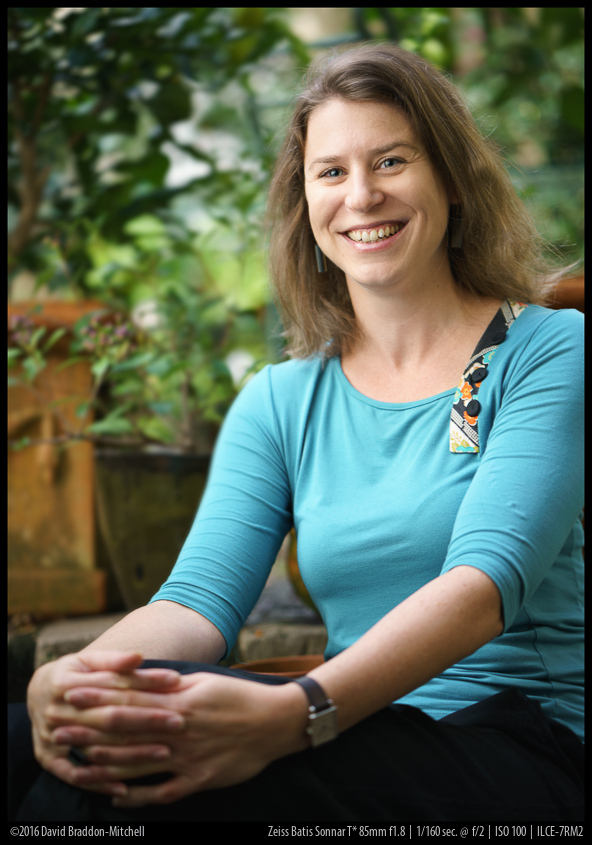
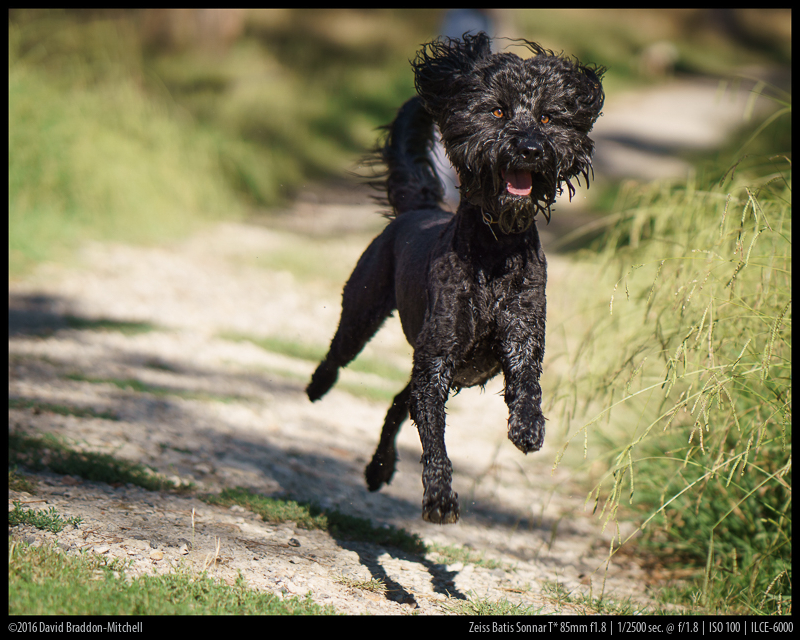
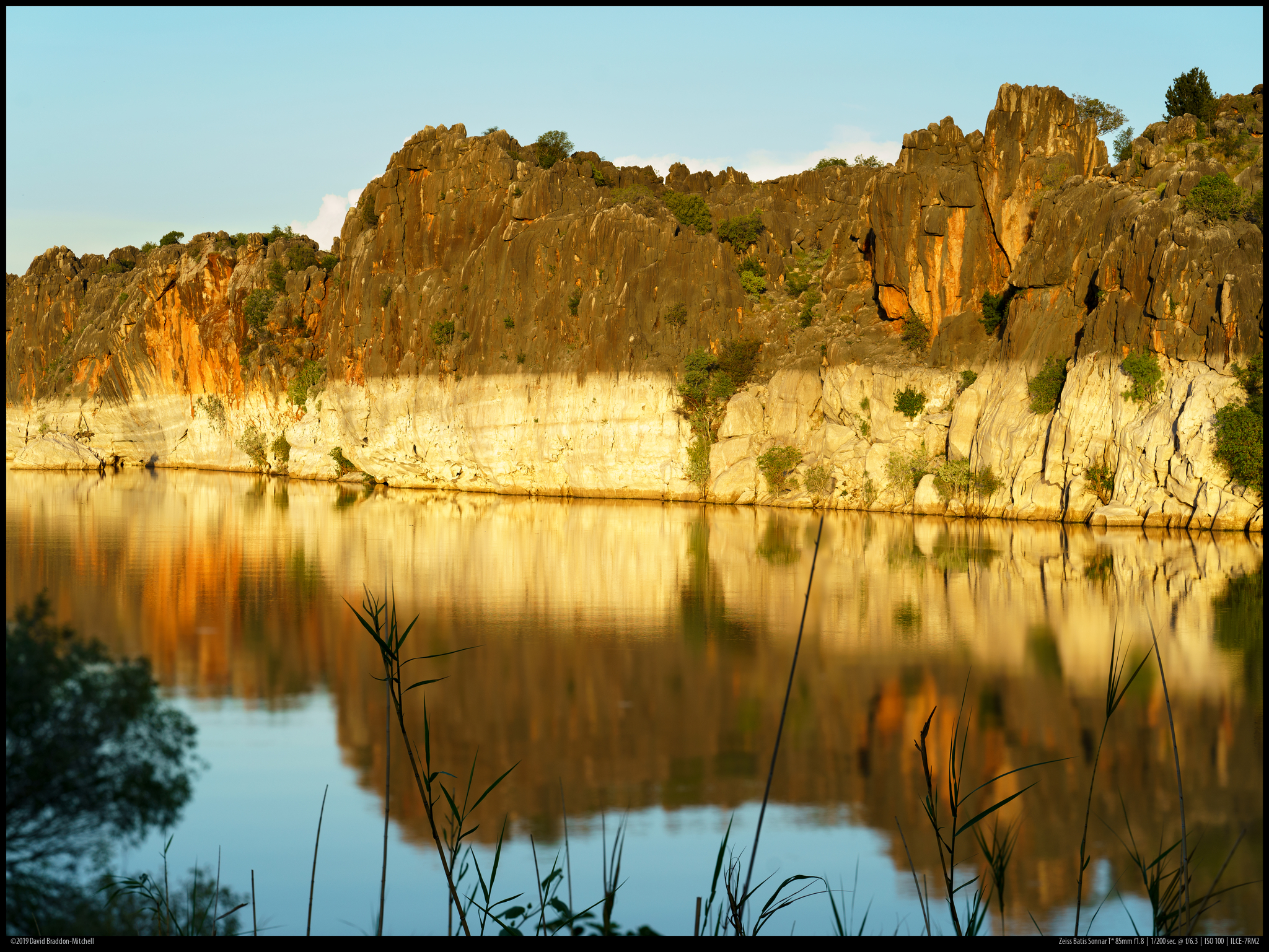
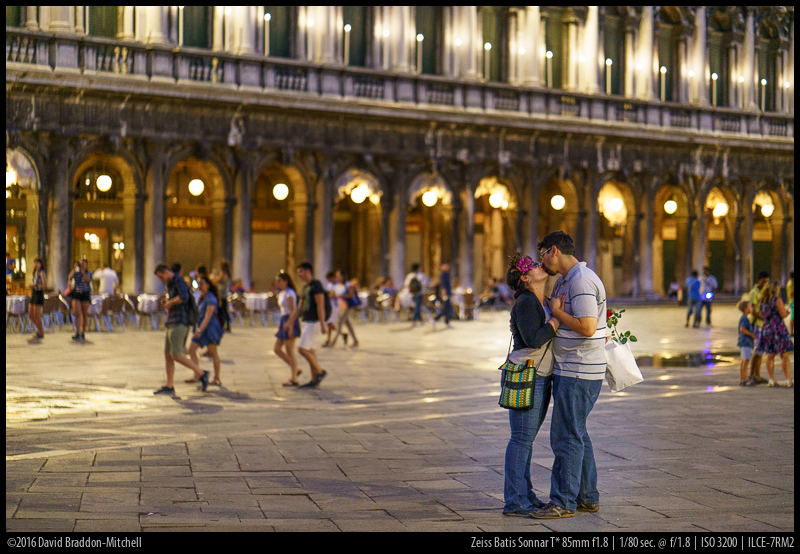
Contents
- Samples
- Specifications
- Features, Build Quality and Handling
- Infinity Resolution
- Portrait Distance Resolution
- Minimum Object Distance Performance
- Bokeh
- Optical Vignetting and the Swirl Effect
- Vignetting (Corner Shading)
- Chromatic Aberration
- Distortion and Distortion Correction
- Flare
- Alternatives
- Conclusion
- More Samples
- David Braddon-Mitchell
- Latest posts by David Braddon-Mitchell (see all)
Specifications
| Diameter | max 92 mm |
| Length | 92 mm |
| Filter Thread | 67 mm |
| Weight (w/o adapter) | 475 g |
| Minimum Focusing Distance | 0.8m |
| Maximum Magnification | 1:7.9 |
| Number of aperture blades | 9 (curved) |
| Elements/ Groups | 11/8 |
If you are interested in purchasing it, buying it from one of these affiliate links makes a small contribution to defraying the cost of this blog. You can get it at:
B&H Photo or from Amazon.com or eBay.com
Features, Build Quality and Handling
The build quality of the lens is excellent. It has the usual Batis heavy duty outer shell and tough finish, and it has gaskets for weather sealing on the lens mount, and is claimed to be well sealed internally. It comes with a substantial hood which does a good job of shading the lens. Batis design is “new Zeiss” and has the same design language as Milvus lenses. People seem to be very divided on this; some love it, others hate it. I’m in the middle: I think it looks nice and slick, but probably prefer the “classic” look.
The very solid lens body is smooth and featureless. This choice means that there is no focus hold button, and no MF-AF button. If you depend on those that will be an annoyance. It doesn’t worry me at all: I have a range of lenses, and I want them all to work the same way, so I have to have a dedicated button on camera to toggle AF and MF. I don’t know anyone (surely there are some) who use the focus hold button for focus hold. But many use if for eye-AF: however with the version 3 firmware for the A7 series, and the version 5 for A9, eyeAF does not have to be actuated with a button anymore.
There is, as usual for Batis, an OLED display which tells you focus distance and DOF. I’ve sometimes used it as a rough indication of focus distance when focussing manually before putting the camera to my eye. I’ve never used it as a DOF scale.
At 475g the lens is relatively light for its speed and quality, though as with most Batis lenses it’s a bit larger than you might expect.
The focus ring is the smooth rubber ring that new generation Zeiss comes with. I actually rather like it for focussing – it’s easy to find with your fingers (though it may not be with gloves on – I live in a fairly warm climate) and very smooth. It does rather attract dust, but it’s fairly easy to clean. But the only ergonomic thing I don’t much like is related to manual focus: like all Batis lenses the focus throw is dependent on how fast you turn the focus ring—”non-linear”. Again this is divisive; some love it (because you can quickly make a big change in focus, and then fine tune), others hate it (because they find it unpredictable and hard to control). Again I’m sort of in between. I would prefer linear focus, but can put up with non-linear and in some situations it’s useful. Zeiss should make firmware available to convert these lenses to linear focus for those of us that prefer it; surely that would be trivial.
The lens has OSS – optical image stabilisation. This will be very useful for users of the first generation A7 bodies that have no in body stabilisation (IBIS). On later generation bodies the stabilising is split between lens and body; two axes on the lens, and three on the body. In theory this could provide better stabilisation than pure IBIS, but in practice it doesn’t seem to make a difference with this or similar focal lengths.
Infinity Resolution
Here’s the usual infinity resolution image. As usual recently, I have taken to moving the camera so as to get the same subject in each location, to make comparison easier. I focussed when the subject was central, and did not change focus for midfield (intersection of rule of thirds lines) and extreme corner.
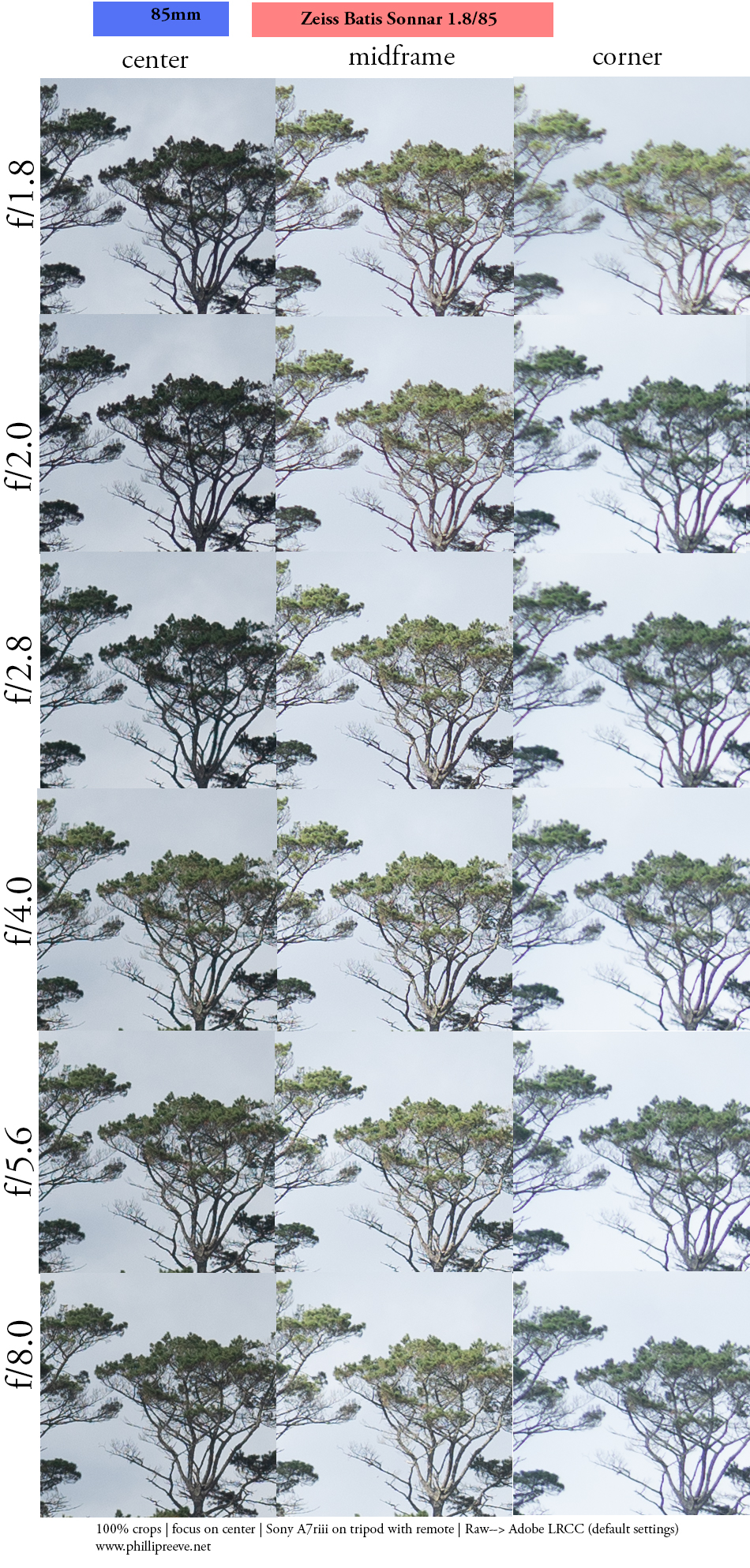
We can get resolution out of the way quickly. It’s terrific. Centre and midfield are extremely good from wide open, and close to outstanding at mid apertures. The extreme corners are good wide open, though improvement is noticeable at f2.8 and reaches its best at f4. The first, slight, visual signs of diffraction occur at f8. In terms of across the image sharpness viewed at the whole image level even printing large (ie not pixel peeping on your screen), the lens can be used from wide open: and the centre and midfield can be pixel peeped as well. The contrast is very high as well.
Maybe we need an article about how we use evaluative language for resolution one day. But for now I can tell you roughly how I use it. Good and very good resolution means that, unless you examine an extremely large print (say a bit less than a metre in diagonal) or the whole image on a high res 30″ very closely, you can’t tell that there is any improvement possible (of course you could if you pixel peep). Excellent for me means that you could not notice any improvement no matter how closely you stare at normal viewing distances. Excellent is also my personal high standard of what it is sensible to care about. Nothing more will make images sharper in most of their intended uses. Outstanding is just more of this goodness: it looks a bit better when you pixel peep at 1:1/42MP. Sometimes I’ll use the phrase “class leading” and of course this varies a bit over time: it means the kind of quality that the absolute technically best lens has at the moment (of course a lens could be class leading in some respects but not others). Currently class leading lenses have absurdly high reoslution, higher than outstanding, and which can only be distinguished at 1:1/42MP.
If you are wondering about the superb and inexpensive Sony 1.8/85, it’s hard to compare real world results taken in different conditions. But have a look at Roger Cicala’s MTF bench tests over at LensRentals: they tell a clear story. While the Sony is very fine, the Batis is even better, both in the centre and off axis. Why have quite reasonable people thought there was little difference? Well if you look at Lens Rentals variation charts, you can see that while the Batis is on average noticeably better than the Sony, in their sample of ten, the worst Batis (while good) was worse than the best Sony. So there are pairs of samples out there which support this view. But on average you will get a better Batis than Sony in terms of resolution, and if you have good copies of both the Batis will be better. And variation is reasonable, too, so you aren’t playing an unpleasant lottery with either of these lenses.
Portrait Distance Resolution
One of the primary uses of a fairly fast 85mm lens is for portraiture. What matters here is not so much even resolution across the frame, but that the eye of your subject, at whatever place you put it in the frame, is sharp when you focus on it. In past reviews I have used a live subject and focused on their eye, but this both requires a cooperative friend, and is subject to possible movement.
Instead I have focused on bank notes, which we also often use for MOD (minimum object distance) tests.
I focused at 2.2 metres, which is a nice half-body to head-and shoulders distance for portraiture. I focussed first in the centre, and then at the rule-of-thirds intersection. Any further into the corners in an unlikely location for an eye in a portrait.
For reference, the two eyes of the Ben Franklin in this image together are about as wide as a regular human eye. This is life-size.
First, wide open at f1.8. Left is centre, right rule of thirds intersection.
Second stopped down to f2.8: again left is centre, right is rule of thirds intersection.
This is extremely good performance. Bearing in mind that a real human eye occupies the same size as both eyes and the area between them in the banknote, at portrait distance this shows that it really doesn’t matter where you place your eye or what aperture you use, the B85 will deliver extremely high resolution. Use the aperture for creative effect rather than additional sharpness, and place the eye wherever you like (other locations, including the edge, that I tried looked similar).
Minimum Object Distance Performance
The Batis 85 focuses down to 80cm. Here is the same detailed banknote image, also at life-size, wide open and at f2.8
Wide open is left, f2.8 is right.
Performance here is exemplary. Excellent wide open, just a touch contrastier at f2.8. No visible improvement on further stopping down. This performance suggests that excellent results could be achieved using extension tubes if closer focus is desired (if performance is already a bit weak at MOD without extension tubes, it tends to fall apart if the lens is forced to focus closer with tubes).
Bokeh
Here is an aperture series showing the bokeh when there is a very busy but relatively distant background (from 4m behind subject), focused at about 2.5m (typical portrait distance).
Optical Vignetting and the Swirl Effect
At the wides apertures most lenses cut off the bokeh balls so they are not perfectly round. This has two effects: one is that when there are specular highlights in the background, instead of being round, they are “cat’s eyes” in the corners. The other effect is that this slight deformation of out of focus structures makes the background swirl a little. Some people seek out old designs that have huge amounts of optical vignetting to achieve this swirl (such as the Helios 44-2).
Lets start with an examination of this optical vignetting (the phenomena, sometimes called mechanical vignetting though these are slightly different phenomena: we’ll have an article explaining this later)
Optical vignetting is the usual cause of the “cats eye” effect which is in turn the cause of slight swirliness in the bokeh:
Here is wide open at f1.8.
Left is the extreme corner, mid is rule of thirds intersection, right is centre.

Here is f2.8
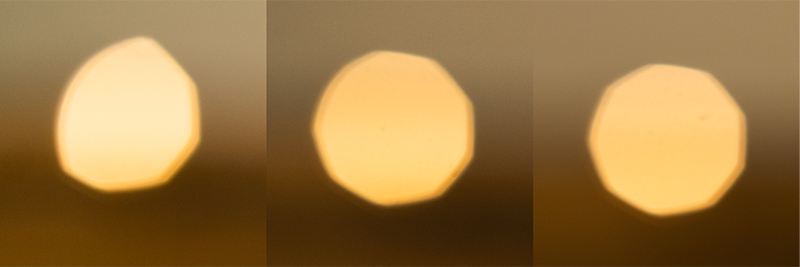
And finally f4.

Wide open the aperture is of course smooth, but we are seeing noticeable cats eyes in both the corner and mid. By f2.8 the mid is regular, and by f4 the corner is almost regular. The angularity is the worst case; in some situations it can appear rounder, depending on exact distances etc.
This is fairly typical for a lens of this class. Zeiss, for example, seems to target a certain amount of optical vignetting wide open regardless of lens speed. This means for example that you will get better optical vignetting performance with an f1.4 lens stopped down to f2, than an f2 lens wide open.
And here is the very slight swirl you get in the background at certain distances because of it at full aperture. I judge this to be typical for a 1.8/85 close to wide open (obviously a faster lens stopped down to f1.8 will be typically a bit better here).

At slightly greater distances from about f1.8-f2.4 you can see more swirl and a bit of edge brightness.
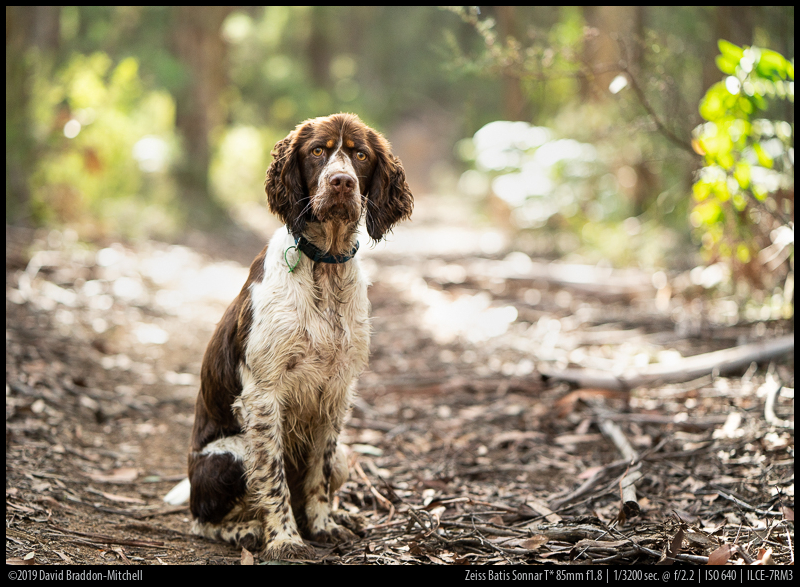
And finally, here is a perhaps unflattering image produced as a “scary Halloween” photo, which I use to show how the bokeh balls look wide open look in close portraits. You can see the cat’s eye effect (as per the technical image above). This is no worse than any other 1.8/85 I know, but of course a faster lens stopped down to f 1.8 would do better (and the GM 1.4/85 does better wide open – that is the best thing about that lens, at the price of a bit of contrast). One good thing about the the Batis is in this comparison is how evenly illuminated the bokeh balls are.
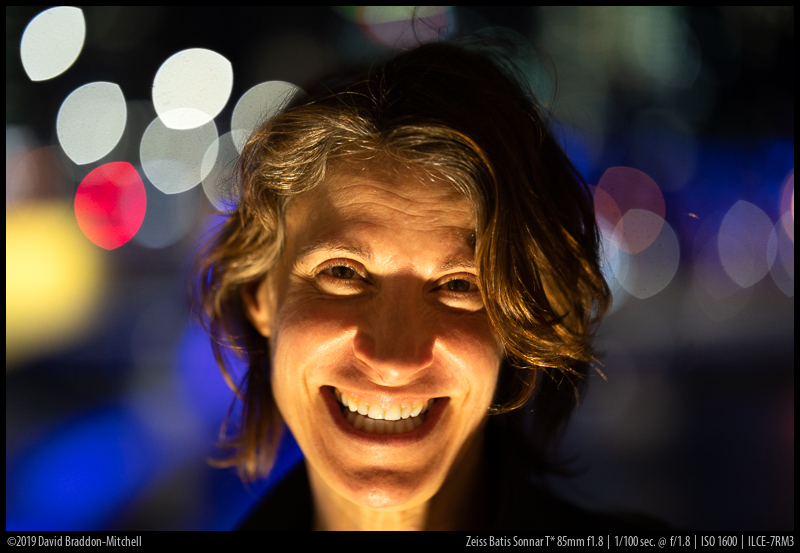
Vignetting (Corner Shading)
Vignetting in this sense is a lack of even illumination across the image field. It is the result of a mixture of causes; usually optical vignetting and natural vignetting. Natural vignetting is the residual vignetting which is not reduced by stopping down. The increase in vignetting relative to this at wider apertures is usually another effect of the optical vignetting we discussed above.
The Batis 85 measures about 2 stops vignetting in the corners wide open; it isn’t field relevant by f5.6 and largely gone by f8. This is perhaps average to slightly higher than average performance for a lens like this. It can be completely corrected by a profile in the RAW converter of your choice, or it can be corrected in camera if you prefer, in which case you will never see it (even in RAWs). I prefer not to correct in camera, as in many situations the vignetting looks good, and correction will create more noise in the corners.
Here’s a visual guide:
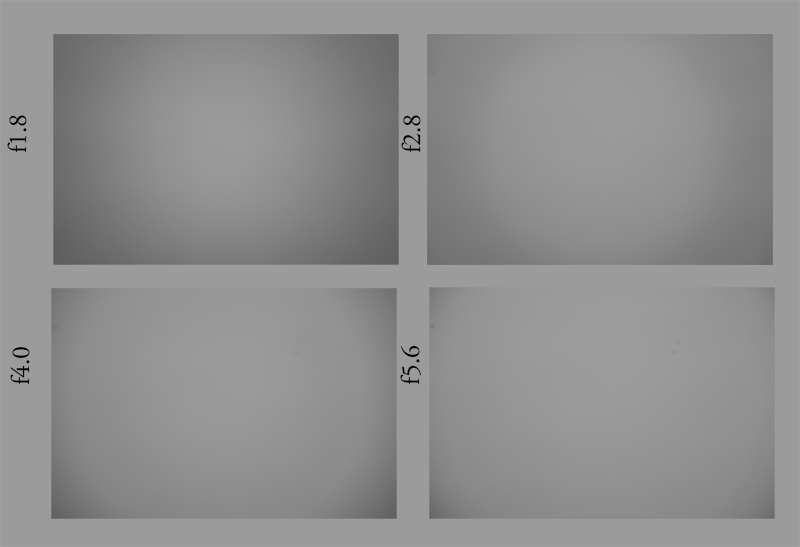
Chromatic Aberration
There’s no visible lateral chromatic aberration (LaCA) though presumably there is at least some which is corrected via the mandatory profile in Lightroom or C1. Since lateral CA correction is essentially losslessly correctable, there’s no point is using a niche converter (or taping the contacts) to reveal the underlying LaCA.
Longitudinal chromatic aberration is another matter. It’s time consuming to correct without bad side effects, and even that may be imperfect, so it’s important to keep an eye on it.
Here’s a guide to the LoCA:
The LoCA is largely in the form of spherochromatism; it is visible wide open, and largely gone by f4. After f4 it can’t be seen.
The performance is good – as good as any other 85mm lens – but not as good as the very best recent apochromatic lenses for the E mount like the CV Apo Lanthars or the Batis Apo Sonnar 135mm. But it wasn’t that long ago that manufacturer would have called this level of colour correction APO.
Distortion and Distortion Correction
The Batis 85 has, as far as I can work out, about 2% pincushion distortion uncorrected (there are reports there of it being 3%). Zeiss’ own datasheet reports 0.2%, but this this after the optional correction profile is applied. I won’t show an image which is designed to show what this much distortion looks like; one image is in any case misleading (and many of you know already). Instead play with lightroom and add a little pincushion distortion (between -2 and -3 on the distortion slider – not much) to a range of images – that will help you visualise it!
This is not huge, but a little more than most short tele lenses, without being eggregious. But it is enough that you might sometimes want to enable correction, which will cost you a little image quality in the corners and midframe.
First a rant: a well known Californian reviewer, whom I respect a lot, has recently been making the case that we hear elsewhere that relying on software to correct distortion is always a bad idea and prevents peak performance. There’s something right about this, but also a lot wrong, and this is a good opportunity to clarify.
Here’s what is true: for a given level of sharpness and micro contrast in a lens, if significant distortion correction is applied, you will lose a bit of sharpness. So it’s a bad idea, right?
No! Because we know only that the corrected image is a little less sharp than the uncorrected one. We don’t know how sharp the lens would have been had it been designed with lower native distortion. Correcting distortion optically can lower sharpness. Nothing in optical design is free. If the production costs of a lens are kept fixed, it may well be that the post correction sharpness of a slightly higher distortion lens, may be sharper than the uncorrected sharpness of the lens if it had been designed to have lower distortion without extra cost.
Now super expensive no-compromise 1.5kg lenses we can expect to be designed for super low distortion and all other aberrations minimised. But as soon as we try to reduce size and cost (or maybe just size) then distortion correction by software could well be, for some lenses, the best overall compromise in terms of sharpness and other aberrations. For possibly the post correction sharpness is as good as the sharpness would have been in the alternative low distortion (same size and cost) designs. Of course we never see the alternatives, so we can’t be sure.
Anyway: the important thing is what we lose when we correct distortion: so let’s see. I have taken a sharpness image from the corner, and the rule of thirds intersection, and compared the distortion corrected and uncorrected versions at life size.
First the corner, where the effect might be expected to be most significant:
And now at the rule of third intersection:
The effect is fairly subtle, and takes close comparison to see it. It’s not visible more centrally. Of course correction is optional: the distortion levels are nowhere near high enough to distort facial features or make a landscape visibly different. I don’t think I have enabled correction in any of sample images shown here. I generally only do it in architectural images, and this is not a lens I use often for that kind of purpose.
Flare
The flare control on the Batis is pretty impressive; much more so than the Batis 25mm 2.0 which came out at about the same time.
With the raw sun in the frame there is remarkably little veiling, and very little in the way of artefacts. It’s essentially prefect if the sun is centred, but as you place the sun off centre there is sometimes a very small blue artefact in the opposite corner of the frame.
Here’s an aperture series with the sun in the frame in the worst position, roughly outside the rule or thirds corner:
This is impressive performance.
An even more severe test is when you allow the raw sun to appear in the frame in an otherwise extremely dark environment, like a forest, then massively lift the shadows. This is the kind of test which makes the Batis 25 look terrible, and there was an internet meme about how the GM 24 (which has generally excellent flare performance) had bad flare performance because of a test like that, in which very few lenses can perform well.
So how does the Batis 85 go?
Here again, in the most difficult part of the frame.
F1.8 left, f5.6 right:
As you can see, again remarkable performance. At wide open there is a little more glare around the sun and some chroma error. There is only one significant artefact, and it is the very small green-blue blob, which would be very easy to edit out if needed. By f5.6 the area around the sun is better controlled, and the artefact is weaker but larger; instead of a small bright blob, it has become a slightly larger area of slight green overlay.
All in all, I’m not sure I’ve seen better.
Sunstars are another matter. As you can see, the lens does not really deliver well controlled sunstars, at least with the sun: the aperture mechanism is a nine very curved aperture system designed to give good results with slightly stopped down portraits. With specular lights like in cityscapes it gives better, 18 point sunstars like other Batis lenses, but, like them, they are nothing to write home about. Of course sunstars are a very subjective thing.
If you want impressive landscape sunstars at dawn or dusk there are no AF options that will do it: really the ZM 85 or Loxia 85 are the choices here, with 10 straight blades.
Alternatives
Sony GM 85mm f1.4:
Reviewed by Bastian here. This is the portrait lens with perhaps the best bokeh of any modern lens. It has remarkably little mechanical (optical) vignetting, and as a result less “swirl” wide open than anything else in it’s range. It also has a lovely SA-induced feel in the out of focus range. It’s just a touch less sharp wide open than, for example, the Sigma 85mm but it’s maybe worth it for the bokeh. By f1.8 it gets very sharp, and is as sharp as the Batis through most of the aperture range, though a touch less contrasty. It is expensive though, and for many people it is a bit large and heavy to double as a travel and portrait lens. The Batis focuses a lot faster.
Sony 85mm f1.8
Reviewed by Jannik here. Excellent inexpensive lens. Sharp and contrasty, but a bit less so than the Batis – and also holds its contrast in backlight a bit less well. It does have a button on the lens – before firmware 3 for the latest generation of Sony cameras this was a big deal, but now that eye-AF doesn’t require a button it’s still nice, but less important. It might focus just a touch faster, and it’s cheaper – but my choice would be the Batis if the extra price is not too much of a sacrifice.
Sigma Art 85mm f1.4
Optically impeccable, right up there with the Batis or perhaps a touch better still. Has a similar look wide open to the Batis, with a lot of contrast. It’s extremely big and heavy – much more so even than the GM and almost three times the weight of the Batis! I’d choose the GM if I wanted a big f1.4 portrait specialist. And if I just wanted sharp and contrasty for other purposes, I’d save weight and size with the Batis.
Samyang AF 85mm f1.4
I haven’t used this, so this is only report from trusted sources – do your own research. It looks like it’s very sharp, and has better AF than many Samyangs (though the latest firmware is thought by some to make it worse not better!). Bokeh wide open is said to be quite good, though with rather a lot of swirl from cat’s eyes. Size and weight are surprisingly low for an f1.4 85mm lens. An interesting option, though the variation and reliability question mark which always hovers over Samyang might raise doubts. Again, I’d go either for the Batis for a lighter, general purpose short tele, or the GM for that lovely swirl free bokeh.
Zeiss Loxia 85mm f2.4
Reviewed By Bastian here. An impeccable lens, which can fill the same brief as the Batis as a general purpose travel/landscape/portrait 85mm. It’s one of the best lenses for the system, and the fact that the Batis really maintains contrast up to a similar level is a great tribute to it. For a small touch of extra quality with the Loxia, you lose a bit of speed, and lose AF which might be a deal breaker for portrait use for some. You gain lovely sunstars.
Zeiss Tele Tessar ZM 4/84
Reviewed by David (me) here. This is still my hiking landscape lens. It’s very small and light, great when you are taking days of food with you. And it has lovely sunstars. But I don’t take it travelling when I’m not hiking overnight. Having the faster apertures and AF, and being at least as sharp and contrasty stopped down, makes the Batis a better choice for this. The ZM also makes an especially great lens for hiking if you also have a big fast one like the GM85 for portraits (but then you still don’t have a do-it-all travel lens).
Legacy 85mm options
For the struggling student there are some cheaper options, even AF ones, that will do the job with some compromises. The old Canon EF 1.8/85 is not bad stopped down, and while a bit soft is fine for portraits wide open, is very cheap, and adapts easily. Any of the Canon 85mm 1.2 lenses provide a lovely soft look wide open, but they aren’t very sharp wide open by modern standards, and aren’t cheap either. FD is manual only, and the adapted AF (or indeed original AF) is very slow on the EF models. For someone who likes manual focus portrait work, the Zeiss Classic 1.4/85 has a distinctive look many find attractive.
Modern Adapted Manual Focus 85s
The Zeiss Otus 85 is probably still the standard bearer, though it’s price is absurd, and it really isn’t all that far ahead of many of these options (when I had the chance to compare it to the Loxia I found them almost indistinguishable at most apertures, except when the Loxia was wide open when the Otus, being stopped down, showed less cat’s-eye effect.) The Milvus 85 is said to be almost as good but cheaper. But probably neither really make sense to adapt and use unless you have them already. Mitakon make an 85mm f1.2 which is said not to be bad; and the Samyang Premium XP 1.2/85 might be interesting too, but none of us has tried it.
Conclusion
good
|
average
|
not good
|
Looking at the table above you might wonder: does he recommend the lens? Yes I do. It’s a very balanced choice, one that it is very easy to overlook for someone who reviews a lot of lenses. On the one hand we like to review lenses that are best in class: the absolute top resolution, or absolute most circular bokeh balls, or the most glorious precise mechanical construction with creamy brass helicoids, or perfectly apochromatic glass that makes us laugh at those lenses that Leica calls APO but still show spherochromatism. The Batis 85 is none of these things!
On the other hand we like to discover amazing bargains. Lenses which are super affordable, and yet still very high in quality – like the obvious competition here, the Sony 1.8/85 (or in a different focal length, the 7A 1.4/28). The Batis is not that either. It’s not cheap for what it is, though not a rip off either.
Instead it’s the balanced choice: The choice made by someone not massively constrained by budget, and has particular use cases in mind. If you want a short tele prime lens with autofocus that is small and light enough to be pleasant to travel with, and which is fast enough to use for portraiture as well as landscape and general travel stuff it’s the best premium choice. The really fast bokeh monsters are too big. The Loxia doesn’t have AF. The Sony is a good choice: but the Batis is just a bit better for contrast and resolution and build. You pay a bit more, you get a bit more. Some might think its a dull formula. You aren’t paying to get any particular class leading feature. But you are paying to get, on average, the best set of compromises for someone who has this use case in mind.
I’ve had mine for three years now, and have never once been tempted to sell it, even though I have other 85mm lenses. It’s unassuming, but very useful, optically outstanding at its best, and nothing else quite matches its complete mix of properties. If you want just one solidly made 85mm lens, and aren’t interested in pairs of them (eg. GM85 and ZM, or Sigma and Loxia) it is likely the one to get.
If you are interested in purchasing it, buying it from one of these affiliate links makes a small contribution to defraying the cost of this blog
You can purchase the Batis 85 via our affiliate links from:
B&H Photo | Amazon.com | eBay.com
More Samples
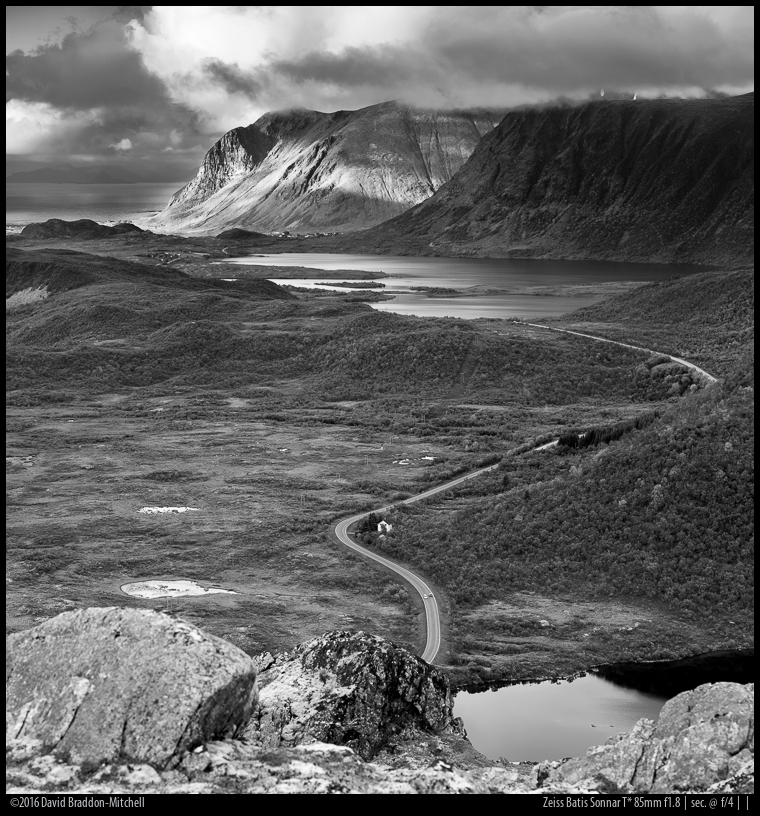
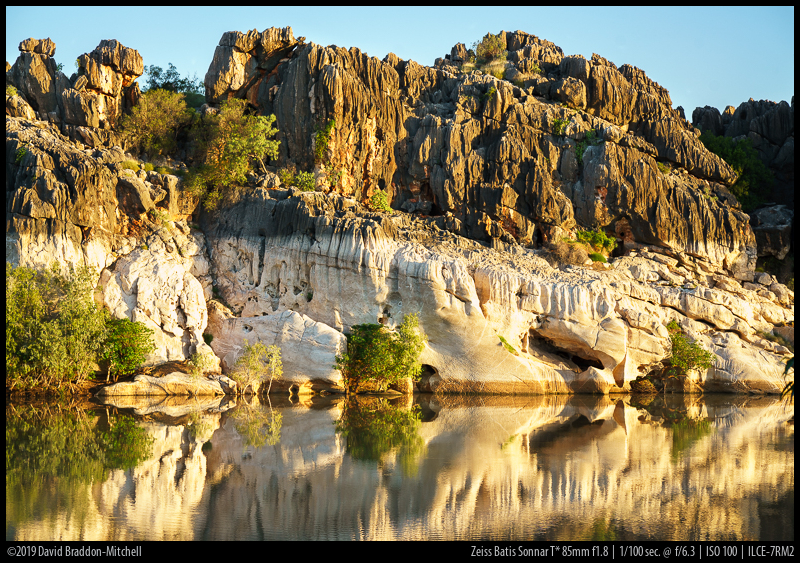
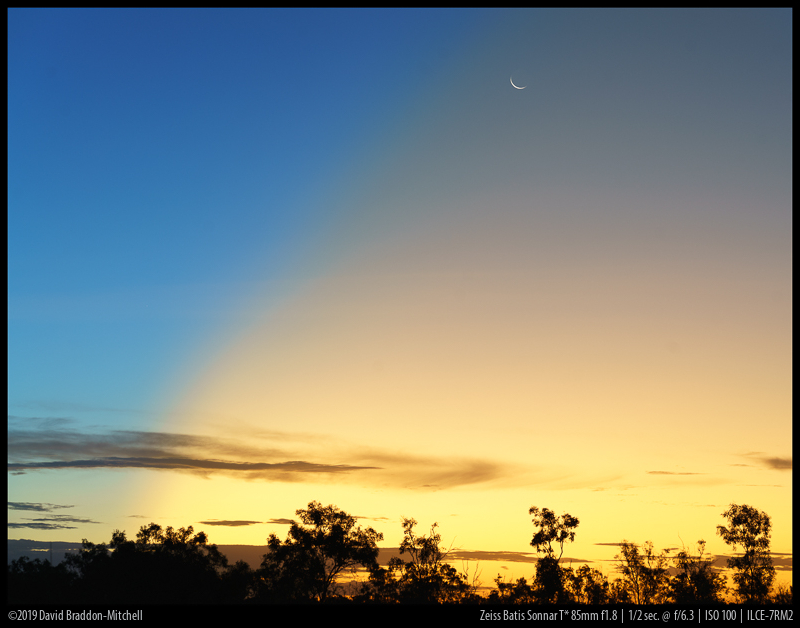
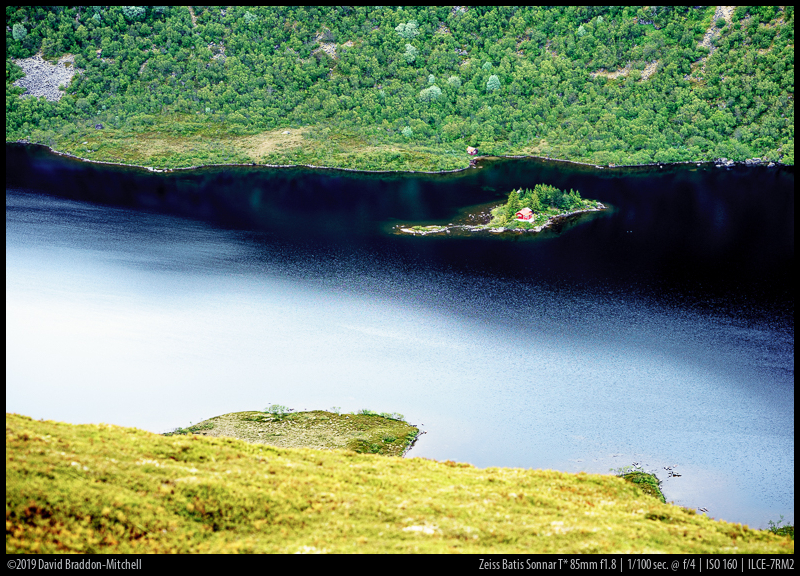
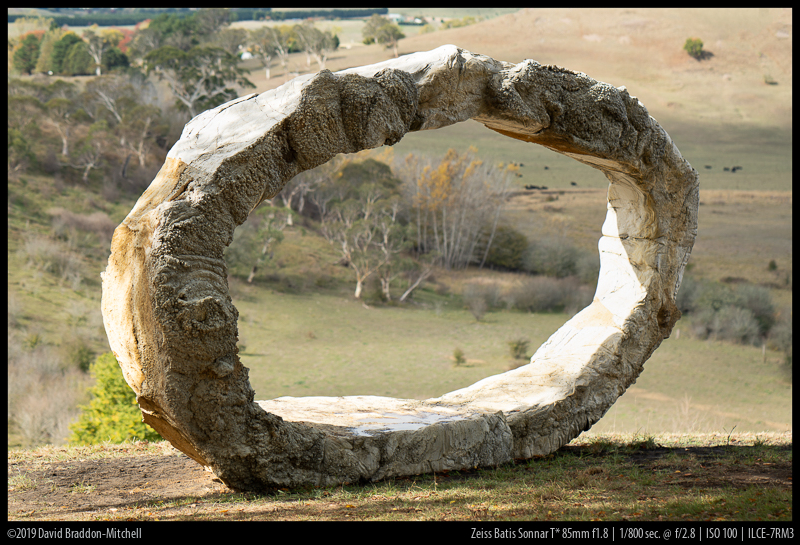
This site contains affiliate links. If you make a purchase using any of the links marked as affiliate links, I may receive a small commission at no additional cost to you. This helps support the creation of future content.
David Braddon-Mitchell
Latest posts by David Braddon-Mitchell (see all)
- Laowa FFii 90mm F2.8 CA-Dreamer Macro 2x: getting close! - August 21, 2022
- FLM Ballheads: a rediscovery - February 4, 2021
- Laowa 14mm f4 Detailed Review - December 31, 2020




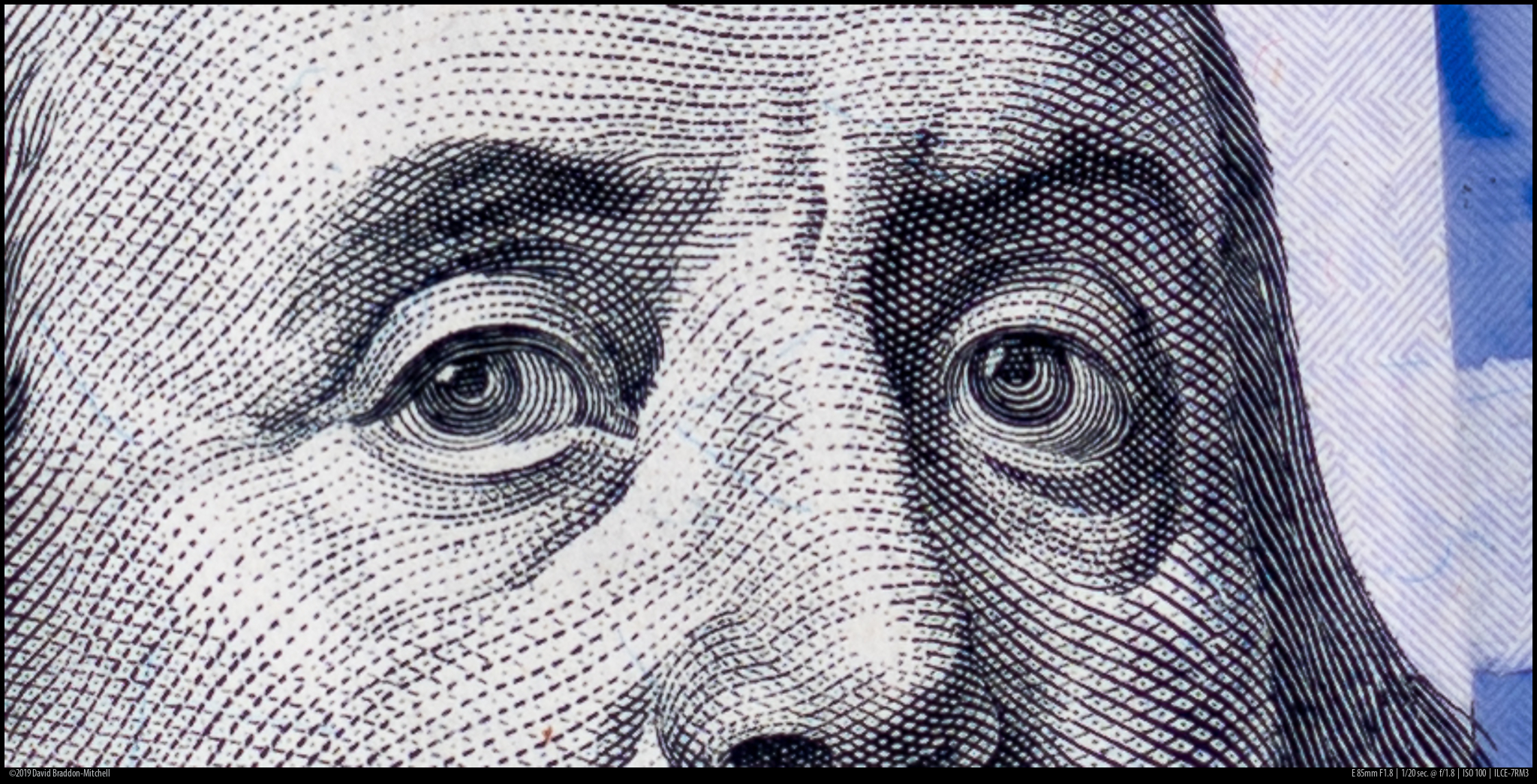
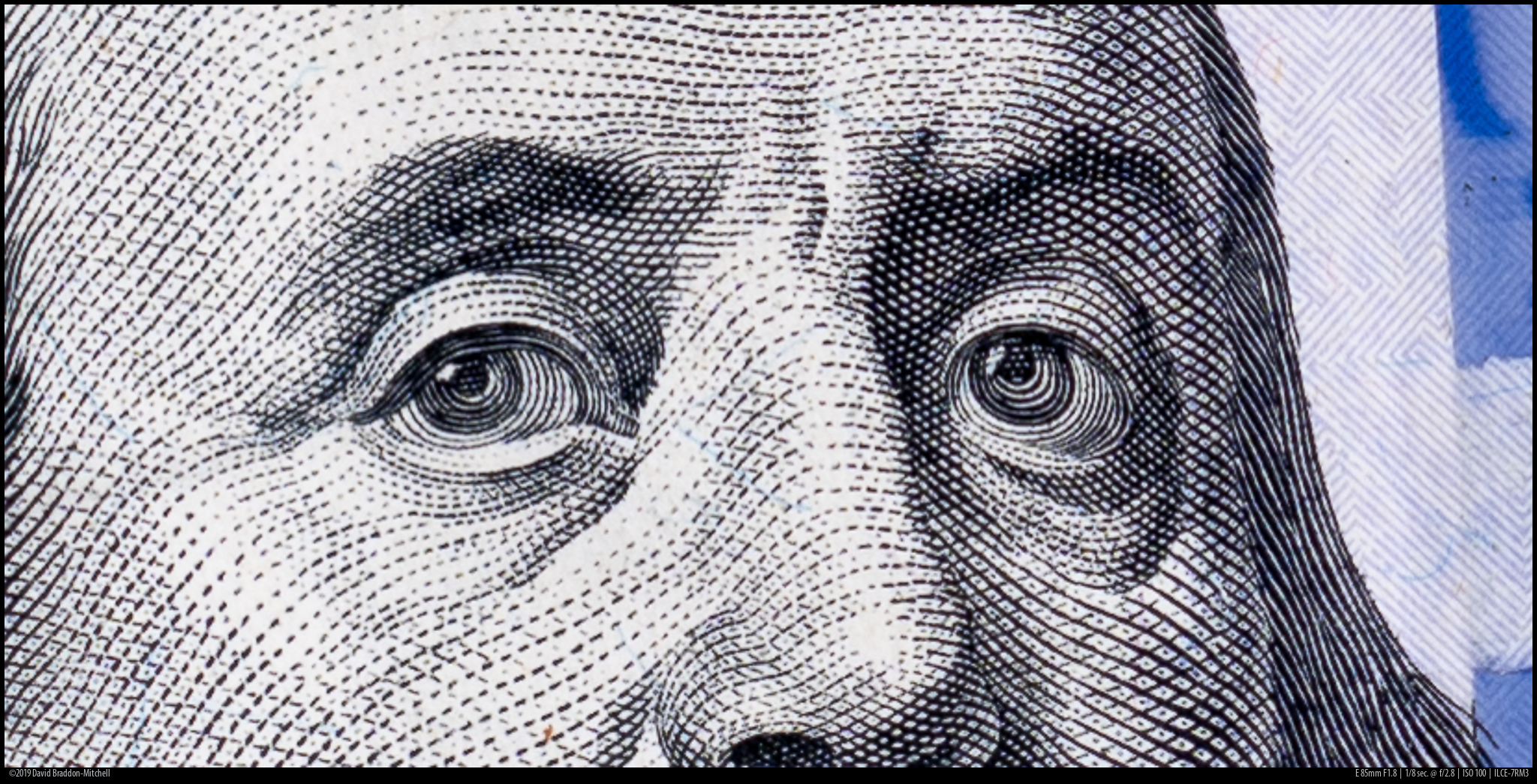
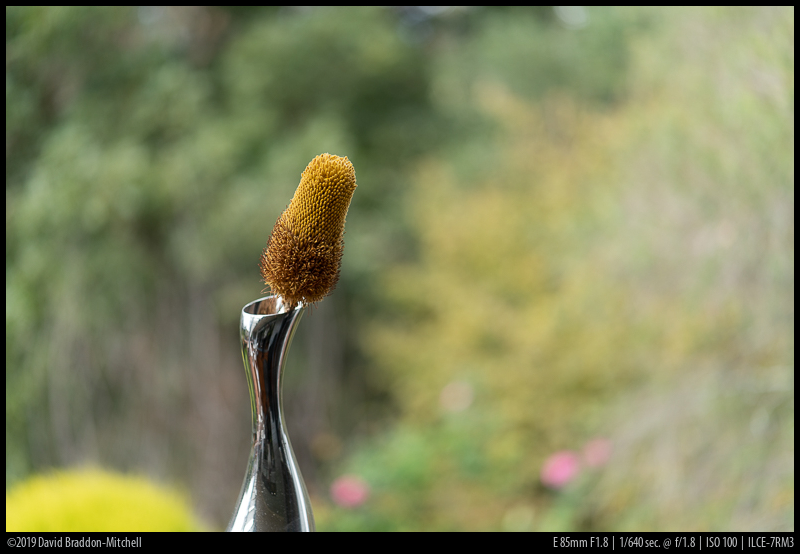
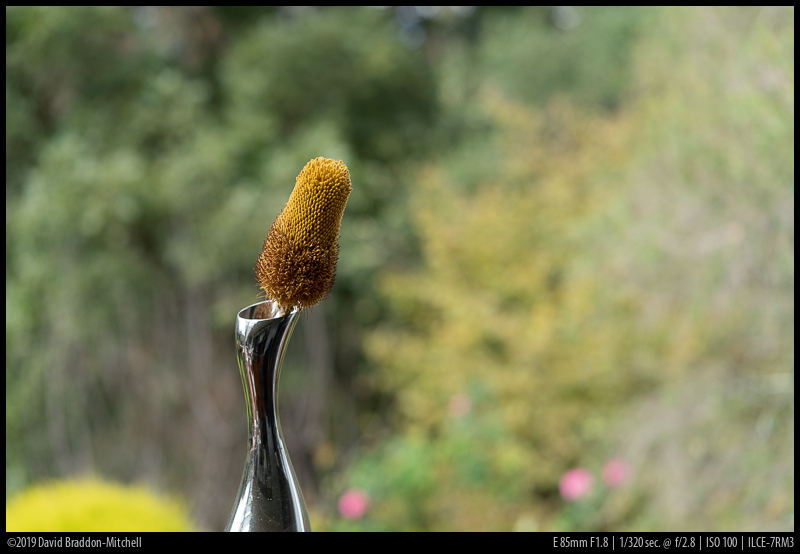
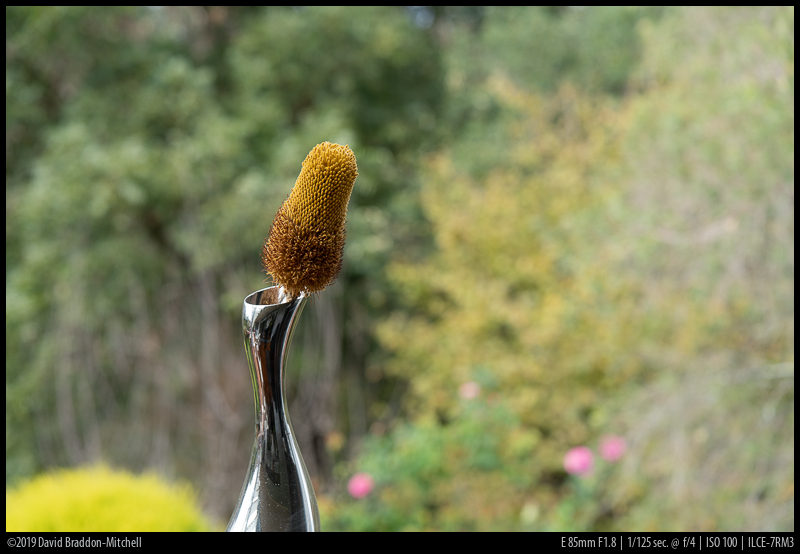
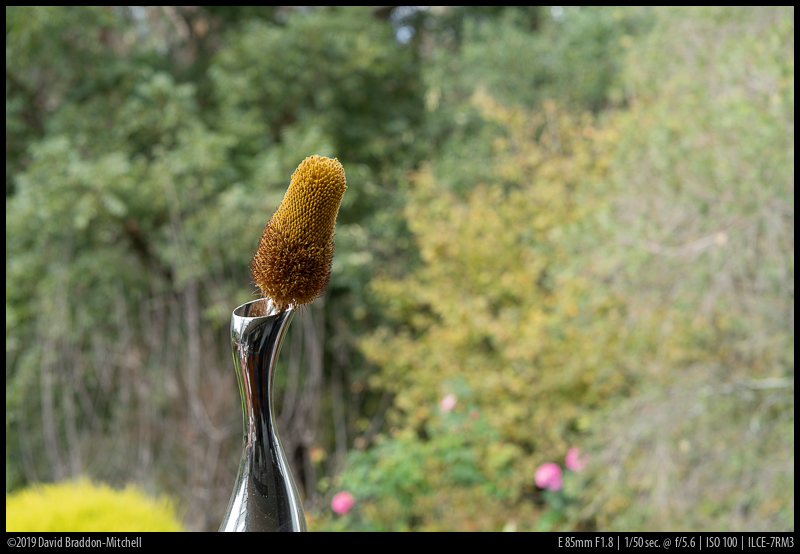

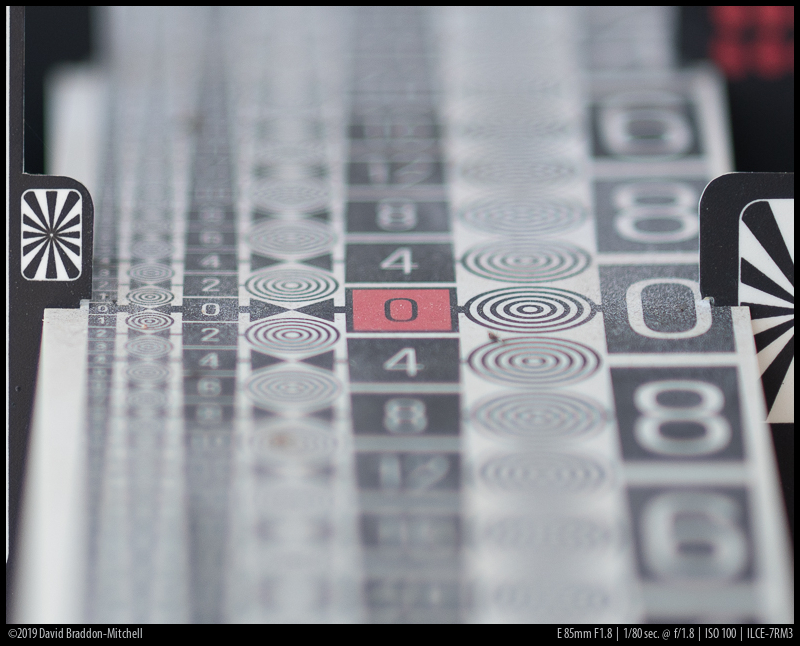
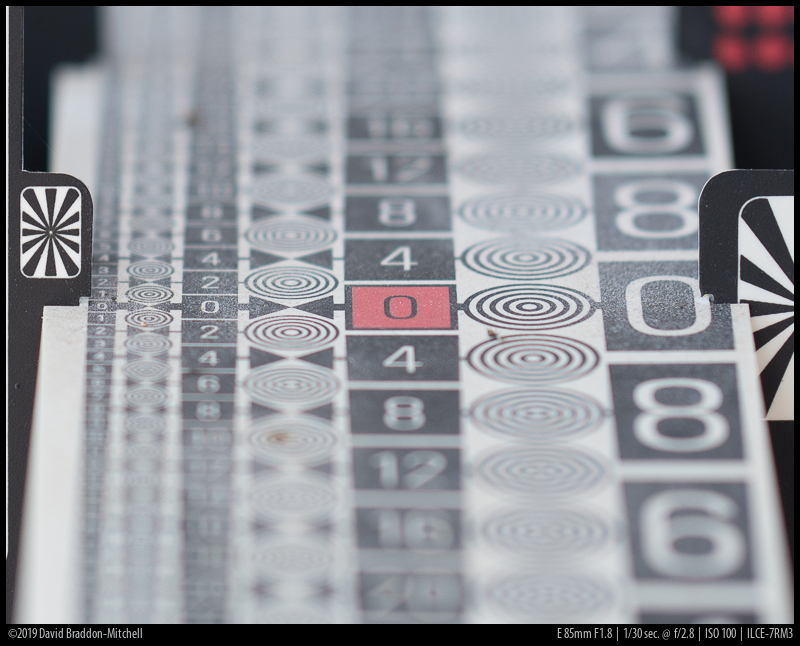
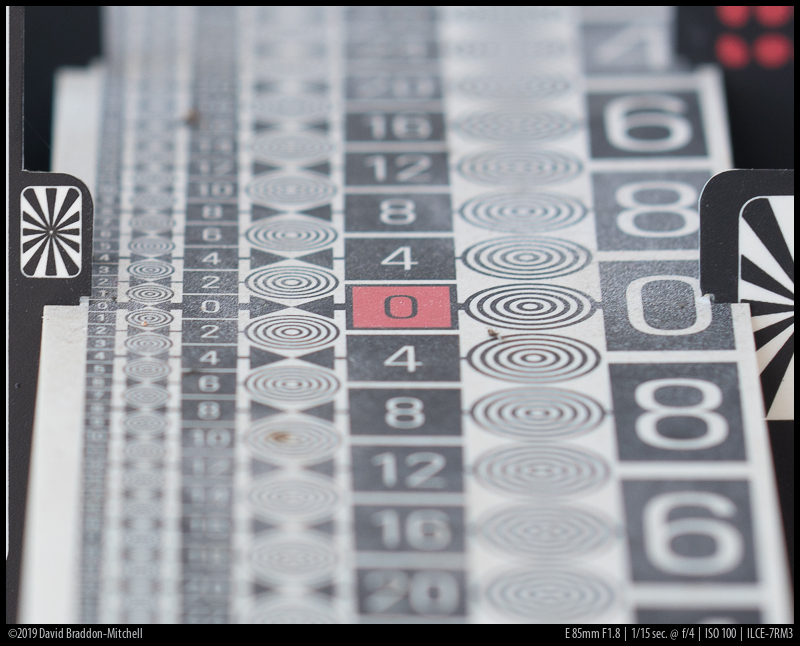

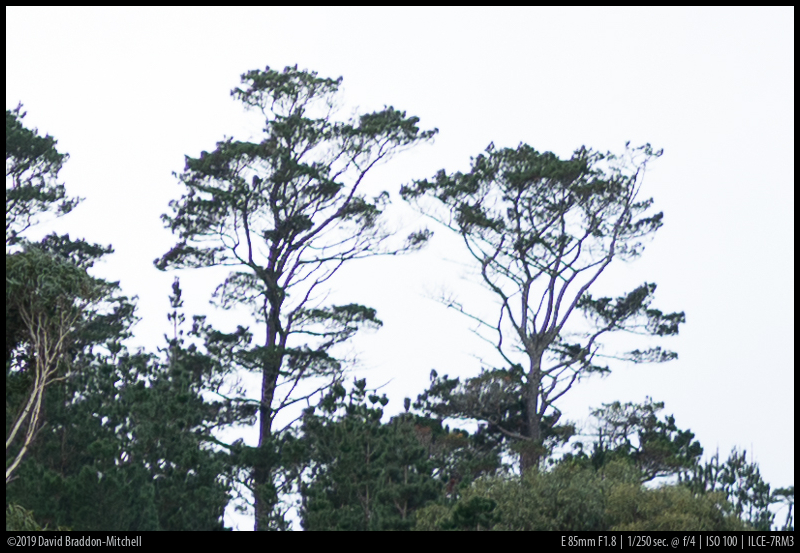
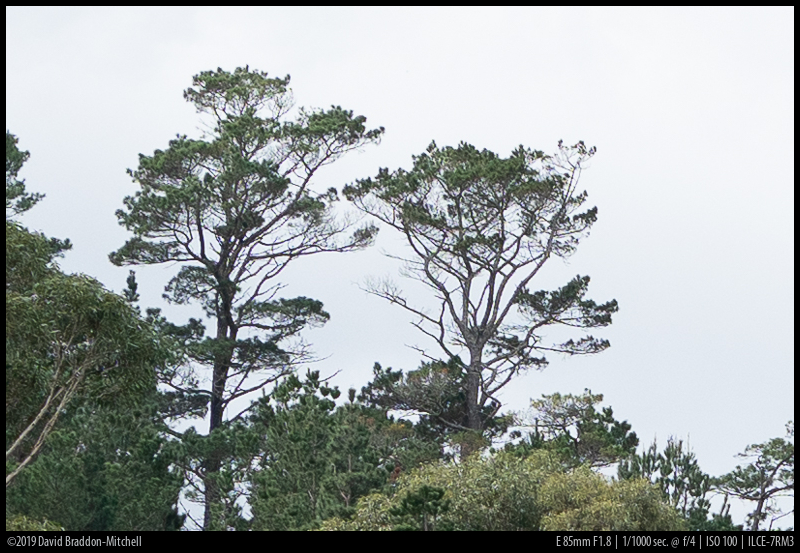
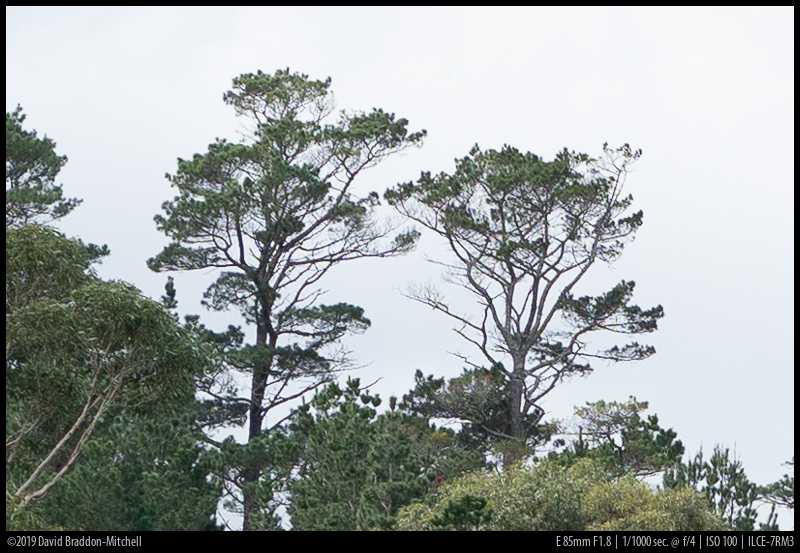
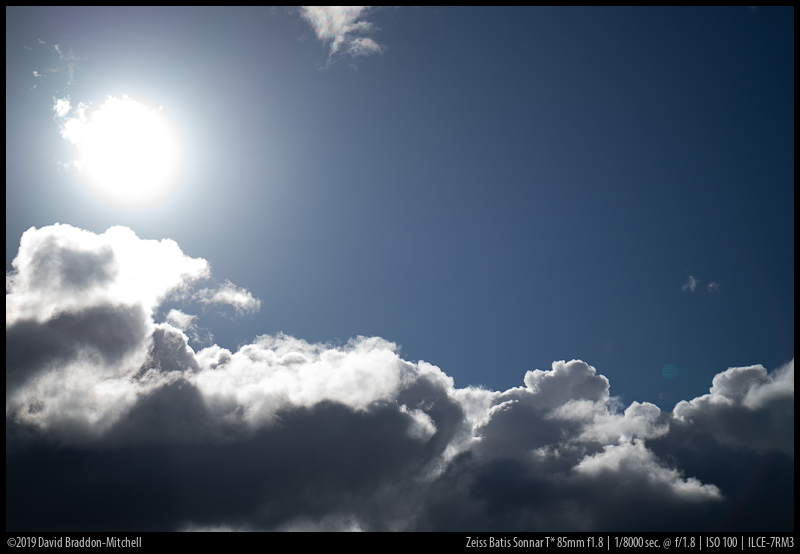
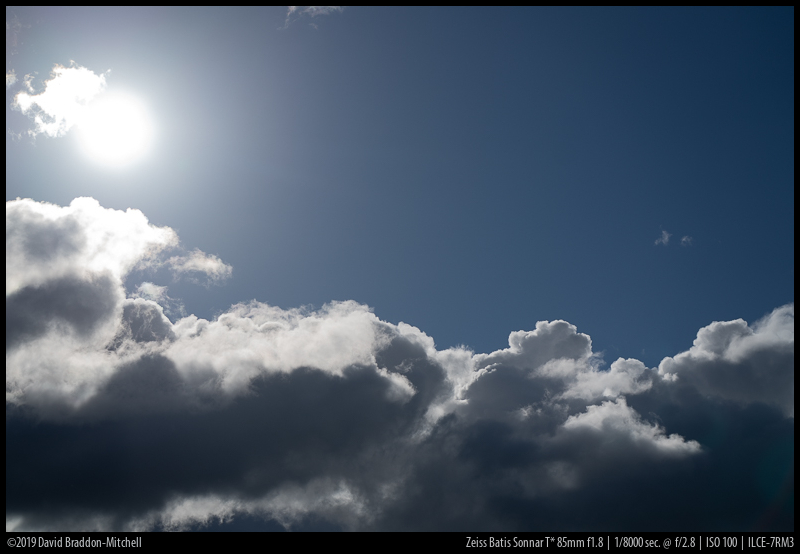
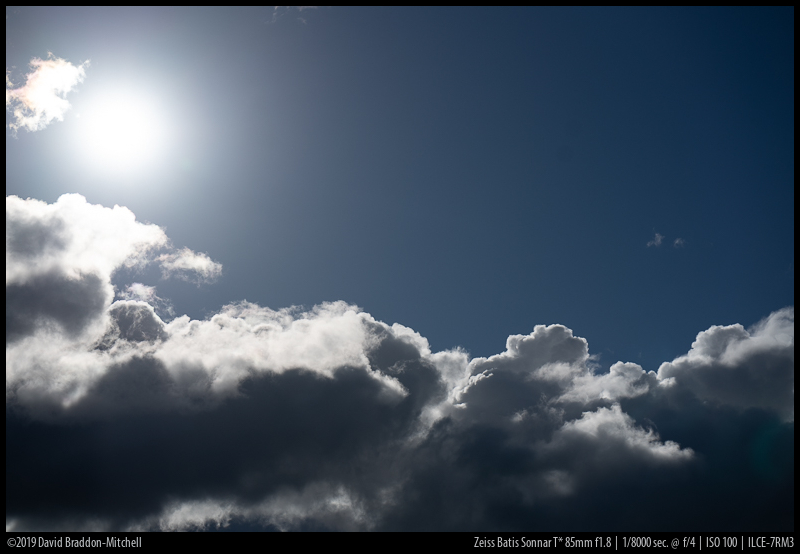
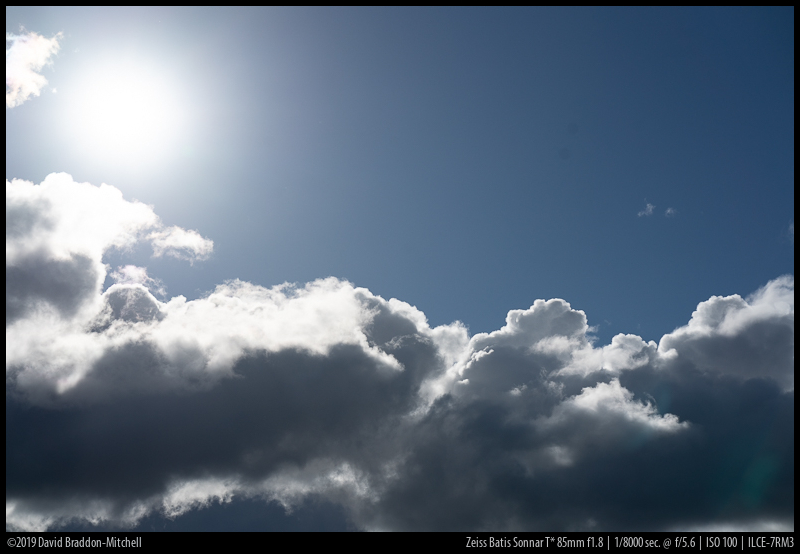
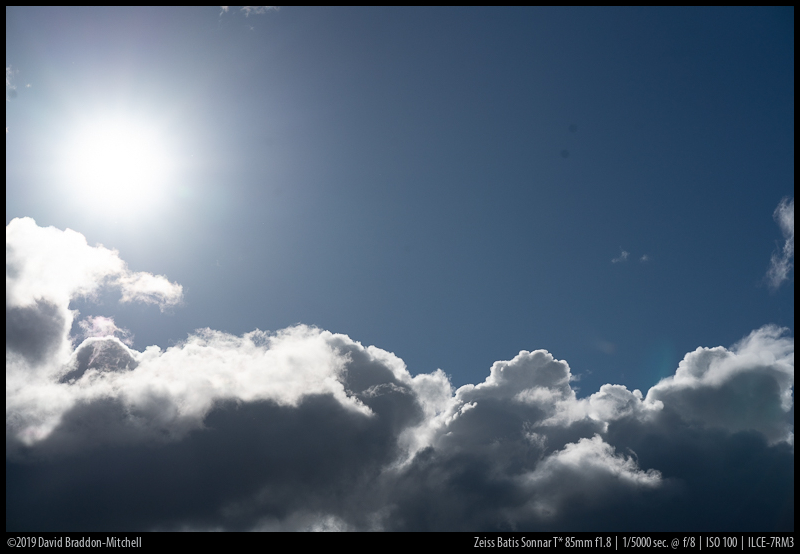
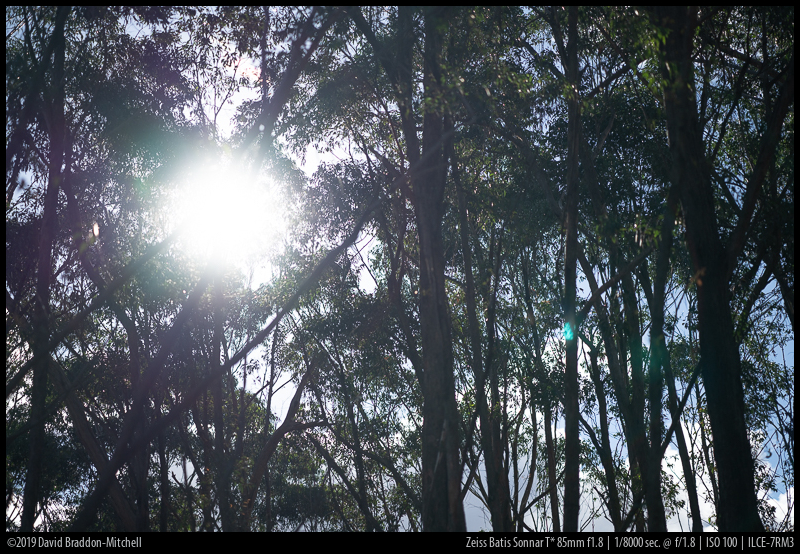
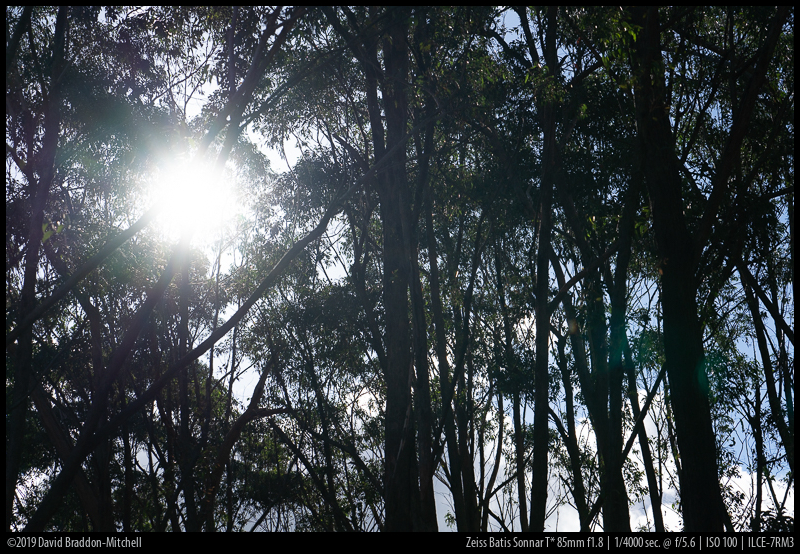
Thank you! This is exactly the review that was needed about the B85!
I bought it as it was the only 85mm then. Tried the Sony 85 f1.8, but I did prefer my old Batis.
For my purpose, walk around, I’m not interested in the big and heavy options.
Your review does right to the Batis!
Hi David,
I’m not interested in this lens (I like mine manual), but I really like the way you do your reviews. So thanks for another write-up. ?
Greetings, Daniël
Thanks, Daniel!
I completly agree with the summary! I love this lens for being nice balanced – great contrast, behaviour with sun in frame, great bokeh and it’s quite light for quality it delivers. I use it on A7 so OSS is also a very nice feature (I don’t know if in-body stabilisation helps with shaking in viewfinder when you enlarge a part of view to manually focus but if not then it’s also an advantage for newer bodies).
After having tried them all I would go with the Sigma Art for maximum IQ across the frame wide open and bokeh that trade blows with the GM beating it in some areas and losing in others.
The GM would be my 2nd or 1st choice due to the fantastic bokeh, still great sharpness wide open though not as good as the Sigma away from the center and smaller size than the Sigma.
The Samyang…yes the Samyang would be my 3rd choice due to its smoother bokeh than the 1.8 options, the extra speed and the fantastic price.
Sony 1.8 would be my next choice because after testing the Batis side by side with the Sony, I did not find any reason IQ wise to go with the Batis other than if you need OSS.
Batis would be my last choice because while nothing wrong with the lens vs the Sony, the price just does not match what you are getting and now that the Samyang is on the mix, the value of the Batis looks even worst.
I agree with most of what you say about the relativities. The Art has the best resolution and contrast, and the GM better bokeh. I’d choose, of these two, the GM as the bokeh wide open matters a lot to me. But that’s a personal choice. These two give the class leading performances in the two categories, at the expense of huge size and mass in one case, and merely large size and mass in the other.
The review agrees with that too: it just says that for an overall, lightweight, do it all lens the Batis is my choice.
The Sony is a great choice too and cheaper. And some copies of the Sony are as good as the Batis (as we can see from the Lensrentals variation charts). But as we can also see, the Batis is typically better, and the best Batises are better than the best Sonys.
Is that worth the extra money? It’s a visible difference, but not a night and day one (based on comparing only one copy for me, and on reading the Lensrentals charts which average then copies of each). That’s also a personal decision. Of course you can make great images with the Sony. As I said, it’s worth the extra money if it’s not a stretch for you.
Good review. I bought the Batis 85 when there was no other 85 available for Sony and it has been performing consistently well since. It’s a bit price, but a marked quality improvement over other 85s I have used, most recently the Nikkor 85/1.8G. In particular, the ability to resist flare is unusually good. I can confirm that the focus ring is easy to use with gloves on (though it’s rarely necessary since the AF is very good), but the smooth surface makes lens changing harder than for example with the Apo-Lanthar 65.
All in all, I pretty much agree with your assessment. The difference between f1.4 and f1.8 negligible in practice from a light gathering perspective, particularly since f1.4 usually gives a too shallow DOF. However bokeh-wise there is a small advantage for f1.4. One point I’d like to make is that Zeiss tends to produce well made lenses and their service where I live is good, whereas other brands have not in the past reached quite the same standard.
Thanks Oskar!
Yes the Apo Lanthars have best in class lens changing ability.
I have always found the B 85 very easy to change (especially compared to Loxias without the add-on changing strip) but then I rarely use heavy gloves.
As a portrait shooting enthusiast, having owned the Canon 85mm f1.8, the Carl Zeiss 85mm f1.4, the Leica Summicron 90mm f2, the Voigtlander 65mm f2, and the Canon 100mm macro f2.8L I found no real reason to get another 85mm portrait lens (although I would love to get the B85). I therefore wanted something more unique and original and got myself a Voigtlander 110mm f2.5 macro and also the CZ Batis 135mm f2.8 and have no regrets. But the B85 is always lurking in the shadows in the back of my mind. Life is good.
Another terrific (and comprehensive, and thorough) review. Thanks for this.
I’m still very pleased with the Batis 135mm f2.8, which I bought after considering various alternatives (the Sony 85mm f1.8 and the Sigma 135mm f2). Your review of that little beastie tipped the balance. It takes beautiful photos, limited only by my own failings.
It is my longest native FE mount lens (I take it everywhere I take my camera).
Thanks Victor!
The mew GM 1.8/135 is even be a little bit better, and faster, but of course you would almost certainly *not* take it everywhere with you even though it’s lighter than the Sigma (and you would likely never see it’s little bit betterness in final images)
A good review of the Batis that matches my experience.
One correction: Benjamin Franklin was not an American President, just one of the “founding fathers” of the country.
Ah, I knew that of course: what I didn’t know was that the image on that hundred dollar note was Franklin (don’t often see US currency, and certainly not high value notes – or “bills” as they call them)
Thanks! I’ve changed it.
I genuinely question the sanity of anyone who purchases the Batis over the Sony. They are practically exactly the same lens. In the UK the Batis costs about 60% more.
A lens is defined by more things than focal length and maximum aperture.
And the review is really helpful in uncovering what the Batis does better. In general the FE85 is the better choice but there are good reasons to choose the Batis for some applications.
Just for the smoother edge the Batis is worth every penny. The Sony is a pain for your fingers because of the narrow gap between Lens and grip.
Thanks a lot for all the reviews!
Cheers, Carsten
Nice review! You mentioned the Canon 85mm 1.8 lens. I found this lens to be terribly overrated. A very high amount of CA ruins wide open shots, and it certainly is soft wide open as you stated. Much better was the excellent (but sometimes overlooked) Canon 100mm f2. It’s like a baby brother to the much respected Canon 135mm f2.
Hi David,
I like the Batis lenses too, have no problems with missing buttons and might buy the Batis 85 as a portrait lens on my A7R4. But in the meantime we have more choices. Can you share some information about your own comparison of the Batis and the Sigma DG DN concerning rendering and reliability concerning eye-AF?
Thanks in advance, Stephan
… just forgot:
do you think there is a chance to get a little closer to the subject (maybe 1:3) with the Batis using a 67mm Marumi Achromat Macro-200 (+5?), which I own anyway? Or would extension tubes work equally good on the Batis and on the Sigma?
Sorry for so many questions 😉
This is David, I’m not logged in so it won’t show up as coming from Philip Reeve. I think these days the Sigma DGDN is a better all-round bet I prefer the rendering wide open andit’s not much heavier and the eye focus and autofocus in general is excellent and at least is good if not better than the batis. It’s just possible that the Batis has a slight contrast advantage at around f2.8 to f4 but I haven’t done a direct comparison, and that’s just the kind of thing where you can delude yourself based on stereotypes and expectations. The Sigma is sharper, even wide open, and even after distortion correction. Yes, your Marumi +5 assuming it’s an achromatic, one would be a great option for getting closer with an 85 mm lens
Thank you David for your thoughts … I´m still unsure but probably I will take the Batis 85 (filter 67 mm) because it can be combined with the Marumi +5, which I very much like on my Voigtlander 65. Every photographer has his own use cases and preferences.